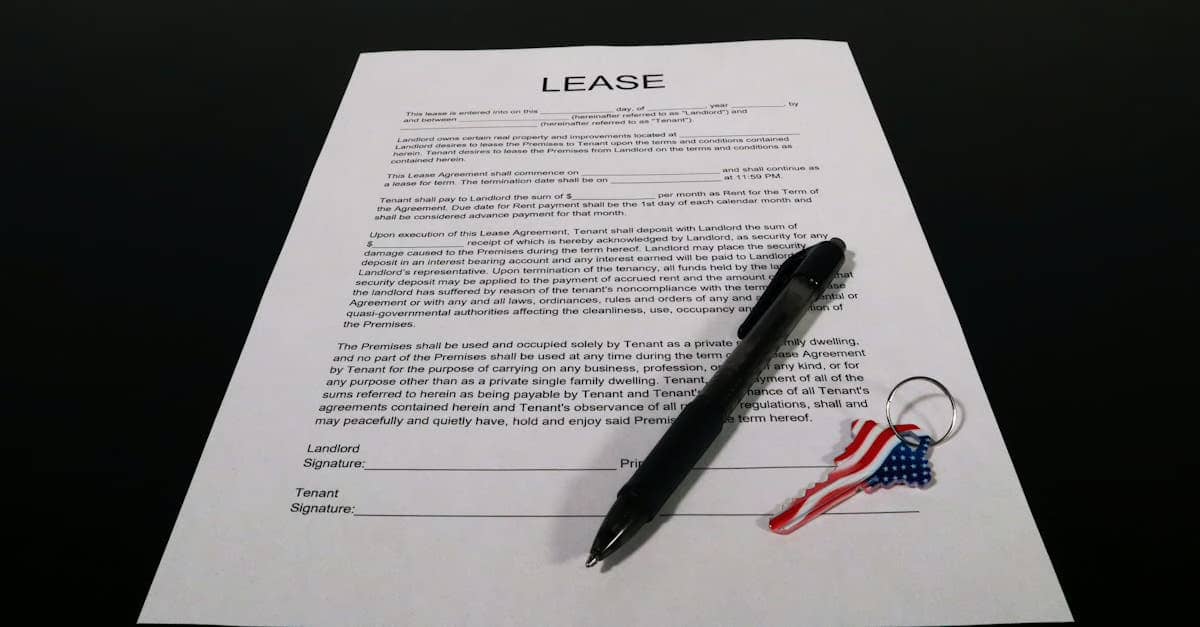The Nitty-Gritty: What is a notice of termination of tenancy by tenant?
Ah, the sweet symphony of closing files! As Transaction Coordinators, we live for smooth transitions. Part of that smooth transition often involves understanding the proper procedures for ending a lease agreement. Today, let’s dive into the tenant’s side of the story and understand what a notice of termination of tenancy by tenant entails. It’s not just a polite goodbye; it’s a formal legal step ensuring both parties are on the same page (pun intended!).
Why Formal Notices Matter in Tenancy
Ending a tenancy isn’t like cancelling a streaming service; there are rules, regulations, and often, strict timelines. Whether it’s a tenant notice to end tenancy or an end of tenancy letter from landlord to tenant, clear communication is paramount. A formal notice protects both the tenant and the landlord, defining the end date, confirming obligations (like returning deposits or property condition), and preventing misunderstandings that can lead to messy disputes. For TCs dealing with tenant-occupied properties for sale, knowing these timelines is absolutely critical.
Tenant’s Role: Giving Notice
A tenant wishing to end their lease early or at the end of the term needs to provide a formal notice to the landlord. This is commonly referred to as a notice of termination by tenant or a tenant ending tenancy letter. The lease agreement itself will dictate the required notice period (e.g., 30 days, 60 days, or even a 3 months notice letter to tenant, depending on jurisdiction and lease terms) and the acceptable method of delivery (certified mail, hand delivery, etc.). Using a sample termination of tenancy letter from tenant can be a helpful starting point, but it must be tailored to the specific situation and lease terms.
Landlord’s Role: Receiving & Giving Notice
Landlords also initiate termination, typically for lease violations or when the lease term ends and they do not wish to renew. This is a notice of termination landlord or letter to tenant to end tenancy. Just like the tenant’s notice, this must follow legal requirements and the terms of the tenant contract form or lease agreement. TCs often encounter tenant occupied properties, making the handling of these notices a key part of managing the transaction timeline, especially if the property is a tenant occupied property for sale.
TC Tips for Navigating Tenancy Notices
- Verify Lease Terms: Always review the lease agreement to confirm required notice periods and delivery methods for both tenant and landlord notices.
- Document Everything: Keep meticulous records of when notices were sent or received, how they were delivered, and any related communications. File that under ‘must read’ for future reference!
- Know Local Laws: Tenancy laws vary significantly by state and municipality. Be aware of the legal requirements for notice periods and content in your area.
- Communicate Clearly: Ensure all parties involved (seller, buyer, agents) are aware of the tenancy status and notice timelines for tenant occupied properties.
- Anticipate Issues: For tenant occupied property for sale, proactively address potential conflicts regarding showings, move-out dates, and property condition.
Why Understanding Notices Matters to TCs
For Transaction Coordinators, the status of a property’s occupancy is a cornerstone of the transaction timeline. A well-executed notice of termination of tenancy by tenant or landlord notice prevents last-minute surprises that can derail a closing. Knowing the difference between a tenant notice to end tenancy and a termination of tenancy letter from landlord allows us to anticipate move-out dates, coordinate inspections and appraisals, and ensure clear title isn’t jeopardized by unresolved tenancy issues. It’s all about managing expectations and timelines with precision.
Analysis & Insights: Best Practices
Best practice dictates that all tenancy termination notices, whether an end of tenancy letter from tenant to landlord or vice versa, should be in writing. Verbal notices are often unenforceable and lead to disputes. Including specific dates, property address, and clear intent is crucial. Tenants should retain proof of delivery. Landlords should acknowledge receipt. For properties transitioning ownership, like a tenant occupied property for sale, ensuring the correct notice (or transfer of lease agreement) is handled legally is a critical step many TCs oversee.
FAQs About Tenancy Termination
Q: How much notice does a tenant have to give?
A: It depends on the lease agreement and local law, commonly 30 or 60 days, but check the specific tenant contract form.
Q: Can a tenant break a lease without notice?
A: Generally, no. Breaking a lease without proper notice of termination of tenancy by tenant can lead to financial penalties and legal action.
Q: What should be included in a tenant’s notice?
A: The date the letter is written, the property address, the desired move-out date, and a statement clearly indicating the intent to vacate according to the lease terms.
Q: What is the difference between a notice to vacate and a notice of termination?
A: A notice of termination ends the lease agreement itself, while a notice to vacate is typically given after a lease has ended or been terminated, requiring the tenant to leave the premises.
Resources for Real Estate Professionals
Understanding these documents is key to successful transactions. For more insights into transaction coordination, check out Rebillion.ai and the Rebillion’s Real Estate Blog. Explore tools that can help manage these complex processes on our transaction coordinator landing page.
Conclusion
Mastering the intricacies of tenancy notices, including the vital notice of termination of tenancy by tenant, is a cornerstone of effective transaction coordination. By understanding the requirements for both tenants and landlords, and meticulously documenting each step, TCs ensure smoother transitions, happier clients, and fewer headaches. Stay precise, stay organized, and keep those files in tip-top shape!
Ready to streamline your TC process? Visit Rebillion.ai to see how automation can help!
*Image credits pexels.com


